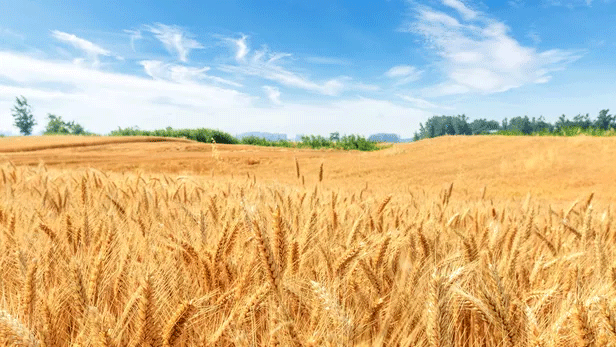Russian Wheat’s Global Reign Continues Amid Black Sea Tensions: What It Means for Farmers Worldwide
In a world navigating agricultural volatility and political tension, Russia has solidified its position as the top global wheat exporter, and this dominance is expected to persist through the 2023/2024 marketing season, according to Agritel, a leading agricultural analytics firm under Argus Media.
Russia’s estimated wheat production stands at 87.5 million tonnes, with an export capacity of 49 million tonnes, representing 23% of global wheat trade. This output remains well above the five-year average, bolstered by competitive pricing, consistent quality, and expanding delivery capabilities.
By contrast, global wheat production is projected to decline slightly, falling to 793.37 million tonnes, according to the USDA’s August 2023 WASDE report. Reductions in Canada and parts of Europe have contributed to this dip, alongside a marginal tightening of global wheat stocks.
Black Sea Corridor: A Fragile Artery of Global Wheat Trade
The Black Sea region—which includes Russia, Ukraine, Romania, and Bulgaria—accounts for 40% of global wheat exports. However, the war in Ukraine continues to disrupt this trade route:
- 30% of Black Sea export capacity is offline due to the blockade of key Ukrainian ports: Odessa, Mykolaiv, Berdiansk, and Mariupol.
- 54% of export capacity is currently considered at risk due to ongoing military escalations.
- Ukrainian wheat output for 2023/2024 is estimated at 20.5 million tonnes, down from 21.5 million tonnes in 2022/23 and a steep drop from 33 million tonnes in 2021/22.
Despite these challenges, analysts highlight the “resilience” of Ukrainian farmers, who continue production under incredibly difficult conditions.
European Outlook: France Regains Competitiveness
In continental Europe, France is projected to produce 35 million tonnes of soft wheat, with at least 17 million tonnes available for export. Although late-season rains downgraded a higher-than-normal share of milling wheat to feed grade, French wheat has regained export competitiveness in recent weeks.
This shift comes as Russian wheat faces higher insurance premiums due to war risk, making French wheat more attractive to buyers in North Africa and possibly China, where adverse weather has reduced domestic milling quality.
Implications for Global Markets and Producers
For agricultural producers worldwide, the current dynamics mean:
- Price competition remains intense, especially from Russia, whose cheap and high-volume exports continue to set global benchmarks.
- Supply chain risks in the Black Sea could create price spikes and market disruptions, especially for import-dependent nations in the Middle East, Africa, and Asia.
- European farmers, especially in France and Romania, may see new export opportunities if Russia’s logistics become more strained or if buyers diversify sourcing for political or risk-related reasons.
- Countries like India, currently reporting record domestic production, and Argentina, a seasonal counterweight in the southern hemisphere, may also benefit from global rebalancing.
As the 2023/2024 wheat season unfolds, Russia’s dominance in the global wheat trade appears secure, but fragile logistics and rising geopolitical risks could alter the landscape quickly. Meanwhile, resilient production in Ukraine and revived competitiveness in France highlight the evolving and adaptive nature of global agriculture. For farmers, traders, and policymakers, staying alert to regional shifts and market signals will be crucial in navigating the coming months.
Error




